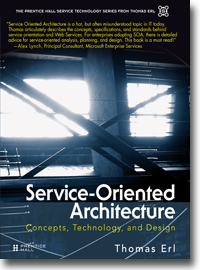SOA Patterns > Basics > SOA Methodology > Overview
Overview
One of the greatest challenges to carrying out successful SOA projects is in understanding how they should be carried out. Without being able to rely on proven processes and practices, an SOA initiative can turn into a high-risk venture because you simply may not know what to expect. A sound methodology can alleviate this risk by providing a solid foundation from where you can shape a delivery approach that accommodates your goals and requirements while also laying out a path to realizing the benefits of SOA and service-oriented computing.
The concepts, processes, and strategies described throughout this site are part of a larger Mainstream SOA Methodology (MSOAM). This methodology is classified as “mainstream” because it really does just provide a set of generic processes and practices that almost always require further customization when incorporated into enterprise environments. It is therefore best viewed as a starting point. The steps within the processes raise issues and considerations and further propose sequences and priorities, all related to the analysis and design of services. Take from this what you need and add to it anything more that may pertain to your specific requirements.
First and foremost, this methodology is designed to help you address key decision points related to weighing the attainable strategic benefits of SOA via top-down strategies against the tactical preferences of bottom-up approaches. As illustrated in the diagram on the Top Down vs. Bottom Up page, cutting short the needed up-front analysis will tend to shift the burden to subsequent governance stages. This is an important message that you should fully comprehend before deciding on how your project will proceed.

